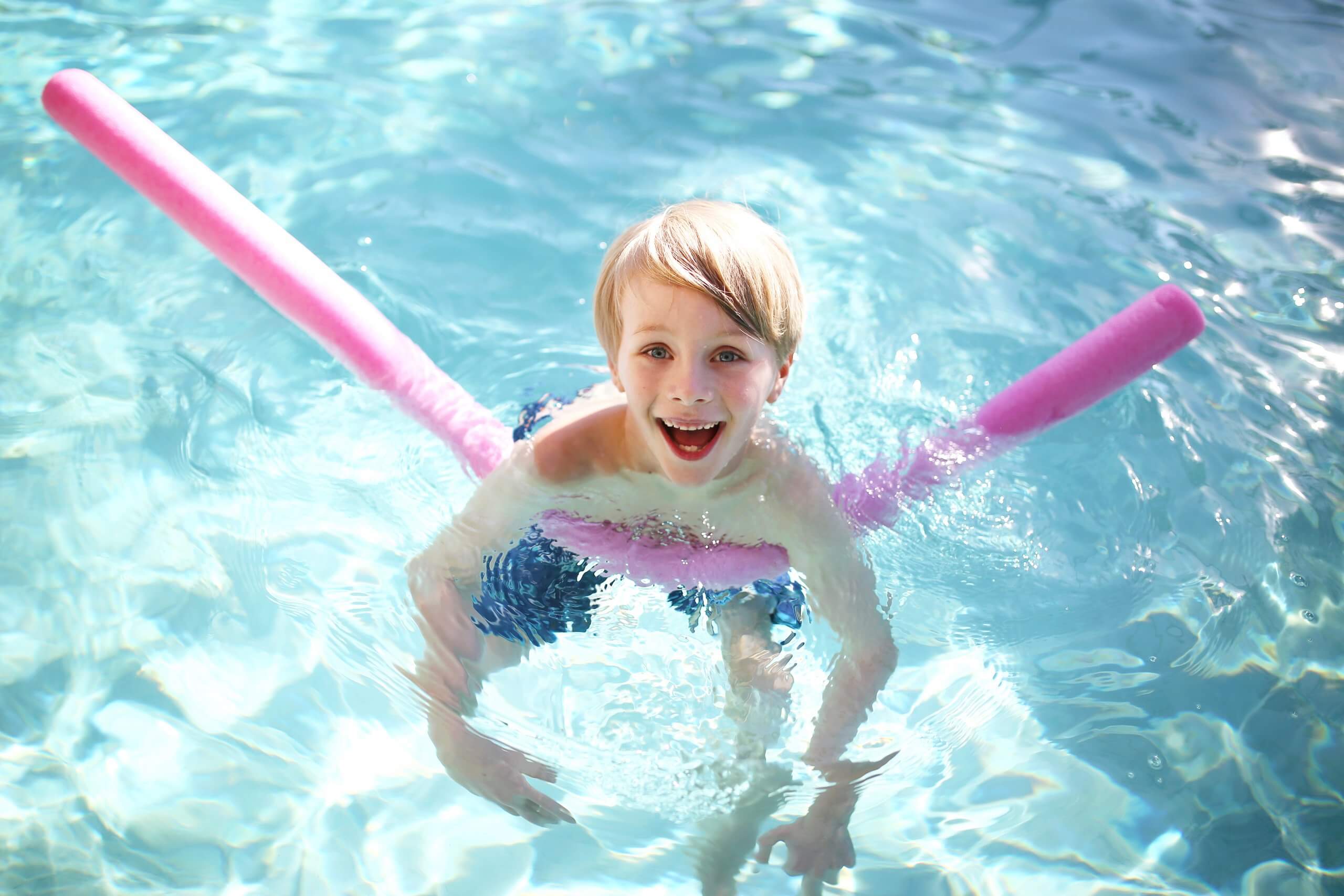December 30, 2025
Why Swimming and Water Play Benefit Kids with ASD
FEATURED POSTS
December 15, 2025
November 25, 2025
By Ashley Williams, Ph.D., LABA, BCBA
Many children with autism are drawn to water for its calming, sensory experience. In fact, a 2015 study[1] found that children with ASD enjoy swimming significantly more than children without ASD. And while water can present a safety concern, water play and swimming also offer several benefits for children with ASD.
How can you build on your child’s interest with activities that promote safe and fun water exploration? Here, I offer ideas and share the benefits of swimming and water play for kids with ASD.
1. Leisure skills
Swimming and water play are great alternatives to many sedentary leisure activities in which children engage, such as playing online games or watching videos on screens. Many families of children with autism report difficulty finding non-electronic leisure activities for their child. And while your child may have other interests, it can be an added challenge to find activities that will sustain their attention for longer periods. Ideal for encouraging more extended periods of independent leisure time in children with autism, water play offers a great solution.
Try, for instance, setting up a water table with different sized cups and tools for pouring, scooping, and squirting water. This activity particularly benefits kids who are learning to explore water safely but don’t yet have interest in or safety skills for independent play in a pool.
2. Physical health
It probably comes as no surprise that swimming and active water play offer fun ways to integrate movement and physical activity into your child’s day. Swimming represents a low-impact exercise and can boost cardiovascular health, while building strength and endurance.
To promote physical health during swimming, practice “bobbing” in the water. If your child does not like water on their face, practice jumping in shallow water. Encourage vocal verbal skills, such as counting, by modeling counting out loud or having your child count or spell as they bob or jump in the water.
3. Creativity and imaginary play
Swimming and water play offer endless ways in which children can play, allowing you and your child to create new games and use your imaginations to explore the water.
You can investigate the buoyancy of different objects by seeing which objects sink or float. Ask your child to select some water-safe toys, and watch as the toys sink or float in the pool, water table, or shallow bin of water. Another visual, sensory activity involves dribbling a few drops of food coloring and observing how different colors diffuse in the water. For added fun, provide bubbles, sponges, or a toothbrush—and watch what your child can do or create.
4. Family time
Some families report difficulty in identifying shared interests with their child with ASD, and many children with autism have narrow or restricted interests[2]. However, thinking creatively about safe water play may help you identify additional interests for your child that are shared with siblings and caregivers alike. Family time in the pool or during water play can create a shared activity and interest for the whole family to take part in and enjoy, while giving you a chance to cool off on a hot day.
Encourage your child’s communication by asking questions about what they see, hear, and touch. Do you notice floating leaves, frogs, or beetles that have made their way into the pool? Use these sensory experiences in the water to ask questions, share interest in the water, and promote communication. Your child can practice pointing, nodding, or responding vocally to your questions about your shared environment.
As you enter the last stretch of summer, use these tips to promote fun and safe water exploration. Then, when your child builds confidence in and around the water, consider swim lessons that teach your child water safety. And while the ultimate goal of swim lessons is to teach your child to swim, safety skills like floating, exiting a pool independently, and holding on to a ledge or wall are often taught first. To learn more, read our blog post “5 Steps to Swim Safety for Your Child with Autism.”
[1] Eversole, Megan, Collins, Diane M, Karmarkar, Amol, Colton, Lisa, Quinn, Jill Phillips, Karsbaek, Rita, . . . Hilton, Claudia L. (2016). Leisure Activity Enjoyment of Children with Autism Spectrum Disorders. Journal of Autism and Developmental Disorders, 46(1), 10-20.
[2] American Psychiatric Association. (2013). Diagnostic and statistical manual of mental disorders (5th ed.). Arlington, VA: Author.







